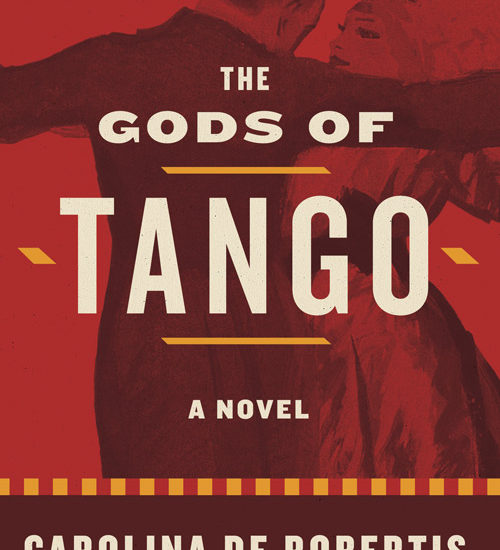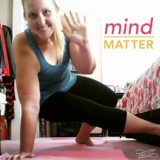A Conversation With An Author: Carolina De Robertis

 I am one to notice little details on websites, billboards, ads. I guess that’s the marketer in me. So one day, while I was on Mills College website, I saw that a Mills alum just wrote a book. Oh my gawd! I had to get to know this fabulous woman and read her book right away! Here is a Holiday treat from me to you.
I am one to notice little details on websites, billboards, ads. I guess that’s the marketer in me. So one day, while I was on Mills College website, I saw that a Mills alum just wrote a book. Oh my gawd! I had to get to know this fabulous woman and read her book right away! Here is a Holiday treat from me to you.
Epifania: Writers, creators, artists often are inspired by ones that came before them. Who inspired you as a writer?
Carolina De Robertis: Too many to count! At the age of ten, I fell into Louisa May Alcott’s world and devoured the entire shelf of her works at the local public library. In retrospect, I can see that her transcendentalist message of intellectual and physical freedom for girls made a deep impact on me. At the age of 13 I started reading from my parents’ shelves, and had my world expanded by Gabriel García Márquez, Salman Rushdie, and Milan Kundera. In high school and college, a few of my world-changers were Toni Morrison, Virginia Woolf, Walt Whitman, James Baldwin, and Jeanette Winterson. Since then, of course, I’ve continued to read ever more widely, with those early formative experiences at the base of my absolute passion for books and endless gratitude for everything they’ve given me.
E: Do you have a writing style/routine? If, so can you explain it?
CDR: My writing routine shifts in response to other responsibilities in my life, from teaching to caring for my two young children. However, whenever possible, I reserve the mornings for writing, as it’s when my mind is at its freshest. I also strive to reserve long swaths of time to write, as sustained periods are essential for developing a novel, at least for me; the more hours I spend in that other world, the deeper I can fall into it and the more can take shape. The key is to be steadfast, to keep returning to the work whether or not you think you have anything to say.
E: How has the MFA degree helped your career as writer?
CDR: My MFA has helped me in a number of ways, the most fundamental being that is expanded my horizons as a writer and reader, catapulting my work to the next level. I grew tremendously in my graduate studies, and was very fortunate to have peers and mentors who in no way pressured me into a “cookie cutter” aesthetic, but gave me support, nourishment, and power tools with which to better fulfill my vision.
Now that I’m a published author, my MFA also supports me in practicing a different art form that I love deeply: that of teaching. I have taught in some form or another since my early 20’s, and it’s a joy to now blend these two passions as a professor of creative writing.
E: The characters in your novel, dance the tango. You really dived into that dance form. Describe how you studied the tango.
CDR: In 1001 ways! Or at least that’s how it feels. I began with scholarly research, reading everything I could get my hands on about the history of the tango, in both English and Spanish, from university libraries and used book shops all over Buenos Aires. For one out-of-print, essential book, the memoir of early tango pioneer Francisco Canaro, I searched internationally for a year and a half until I finally bootlegged a copy a musicologist procured for me. Later on, I took violin classes form a tango musician (my protagonist is a violin player), took private dance classes, and interviewed tango dancers, teachers, and musicians about their experiences and passion for this unique and historically rich art form.
E: Now that is dedication. As writers, we often have a passing thought of a future story. Then another passing thought. It sometimes is a thought about a storyline or a character or dialogue. What was your first thought about, that eventually led to “The Gods of Tango”?
CDR: Absolutely first seedling for The Gods of Tango was an image I’d been carrying inside for years, of my great-grandmother, Emilia De Robertis, on a steamship to Buenos Aires at the age of 17, knowing she’d never see her family in Italy again. I wanted to know what that felt like, and, more broadly, what that might suggest about the general experience of migration and the ensuing transformation of cultures. Very soon after I started writing, this story of migration at the turn of the 20th century, this story of immigrants to Argentina, became a story about the musical and dance form that their presence helped foment and create.
E: What has been the best piece of advice you have received? It can be about life, writing, relationships, etc.
CDR: Perhaps this quote, given to me not in person but through the alchemy of reading, a piece of guidance from the great Audre Lorde that I have returned to time and time again: “When I dare to be powerful, to use my strength in service of my vision, it becomes less and less important whether I am afraid.”
E: That is a powerful statement. Now, Epifania is all about inner happiness/peace. What does happiness mean to you and how do you find happiness?
CDR: Happiness, true happiness, is made possible within. Inner peace radiates out—into our relationships, our actions, and, for those of us who are artists, into our work. For me personally, an essential ingredient to happiness has been the courage to live in alignment with my truth. Perhaps this is because I’m a queer woman, and a writer, and an immigrant, and so there’s a certain amount of going against the grain inherent in being authentic. But I suspect that it’s true for everyone: real, abiding happiness comes from connecting to what’s deeply true, deep inside us. When that’s the case, every leaf, every moment with a loved one, every breath can be a source of the most radiant joy.



